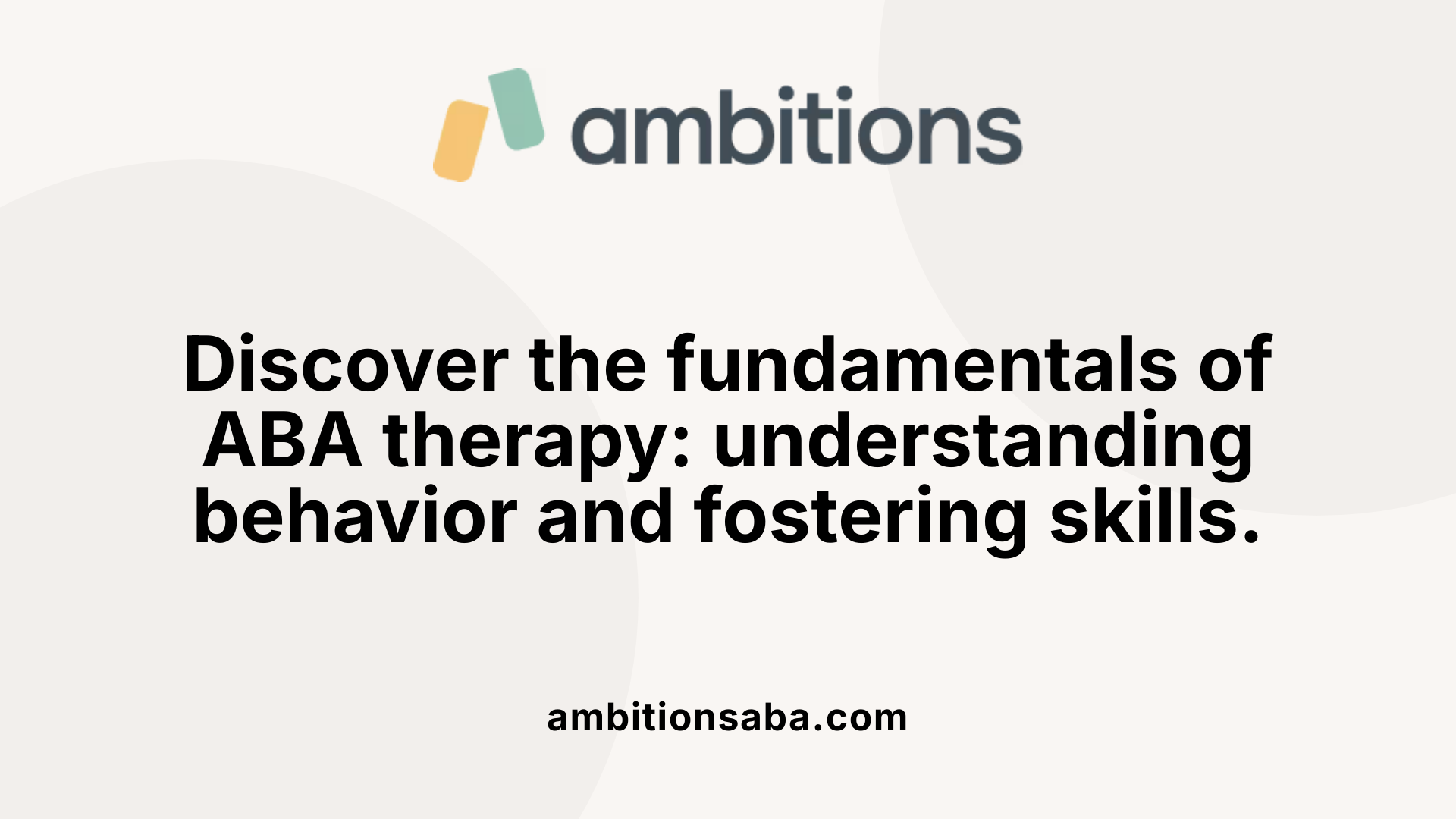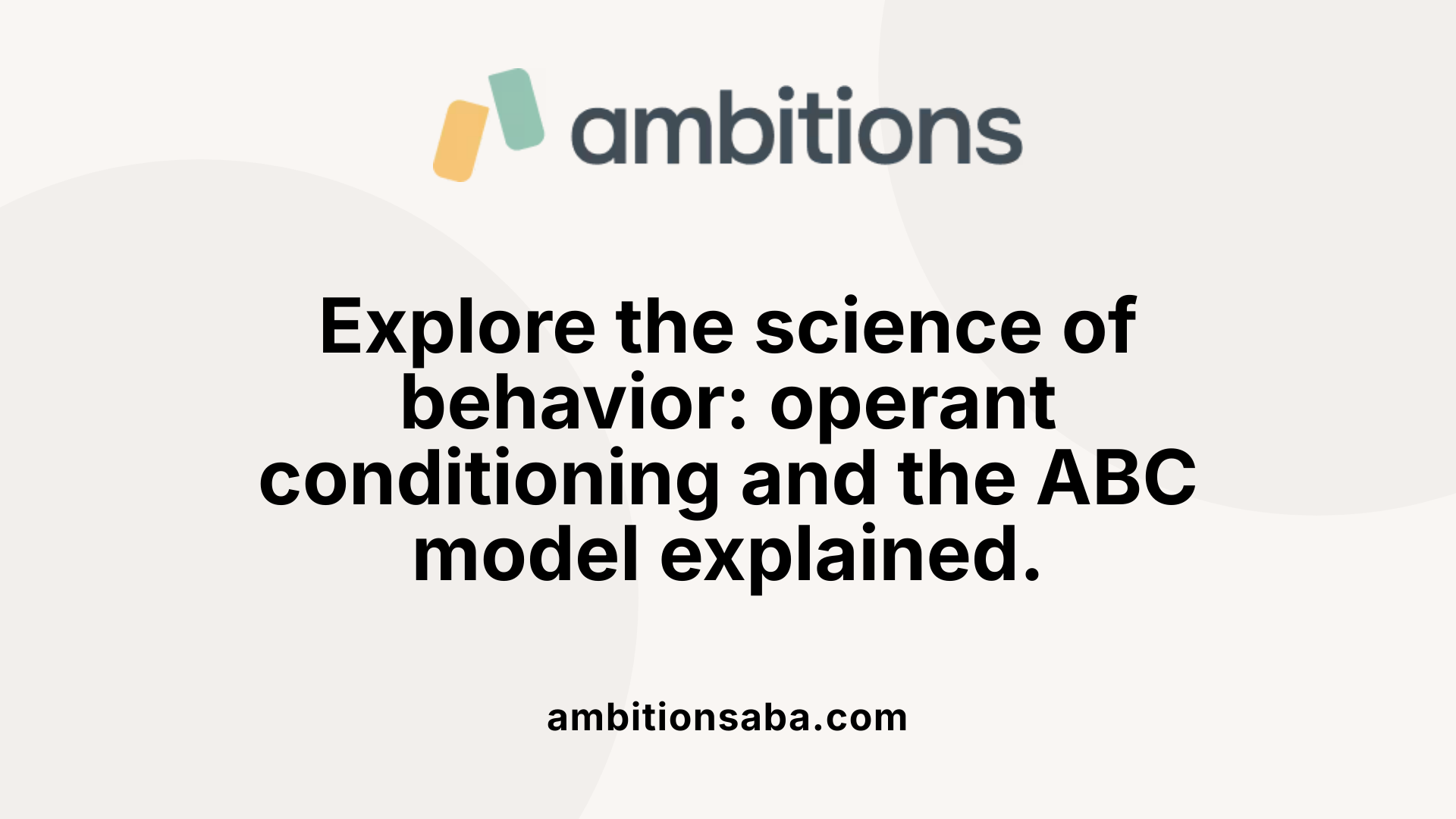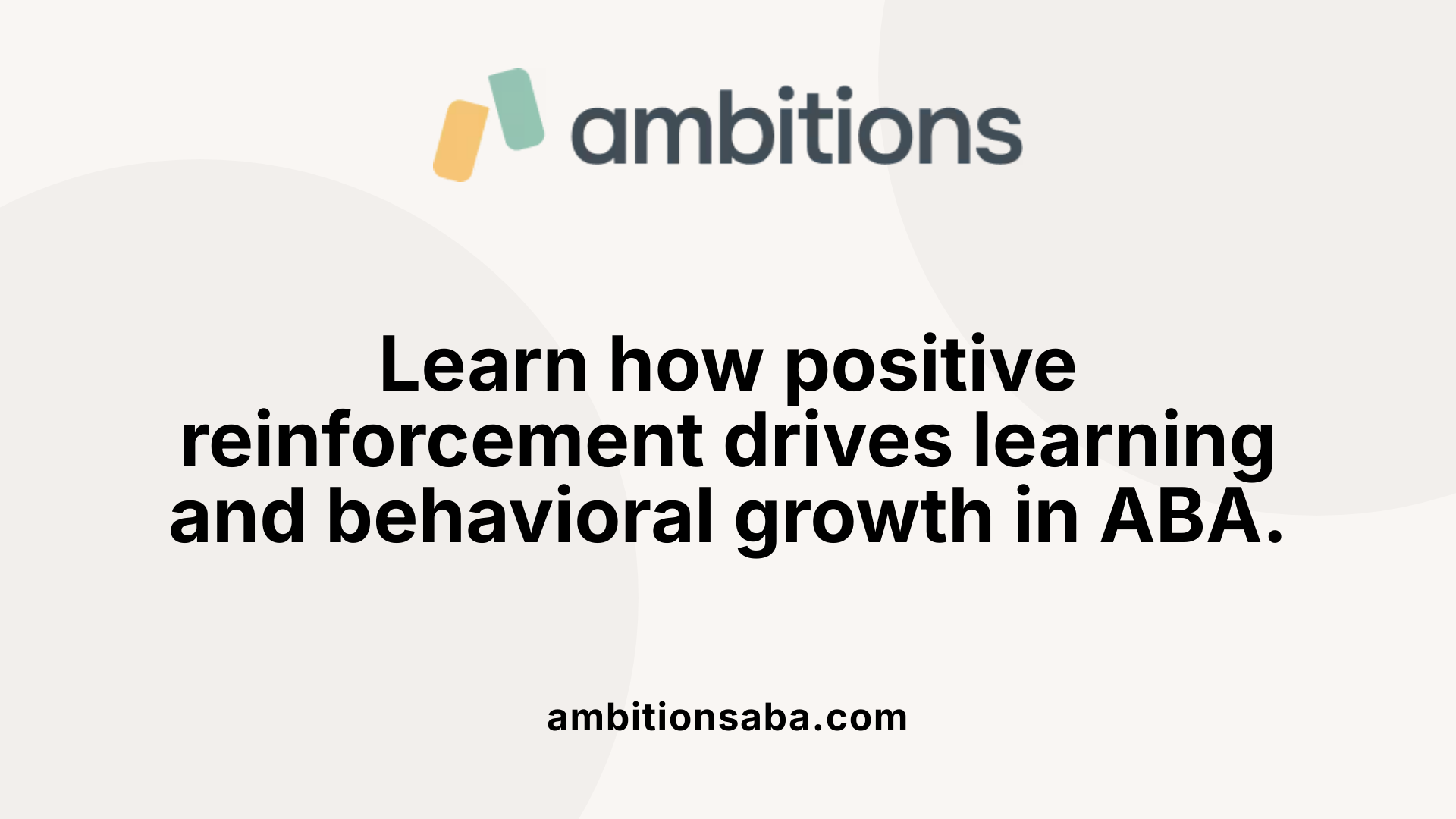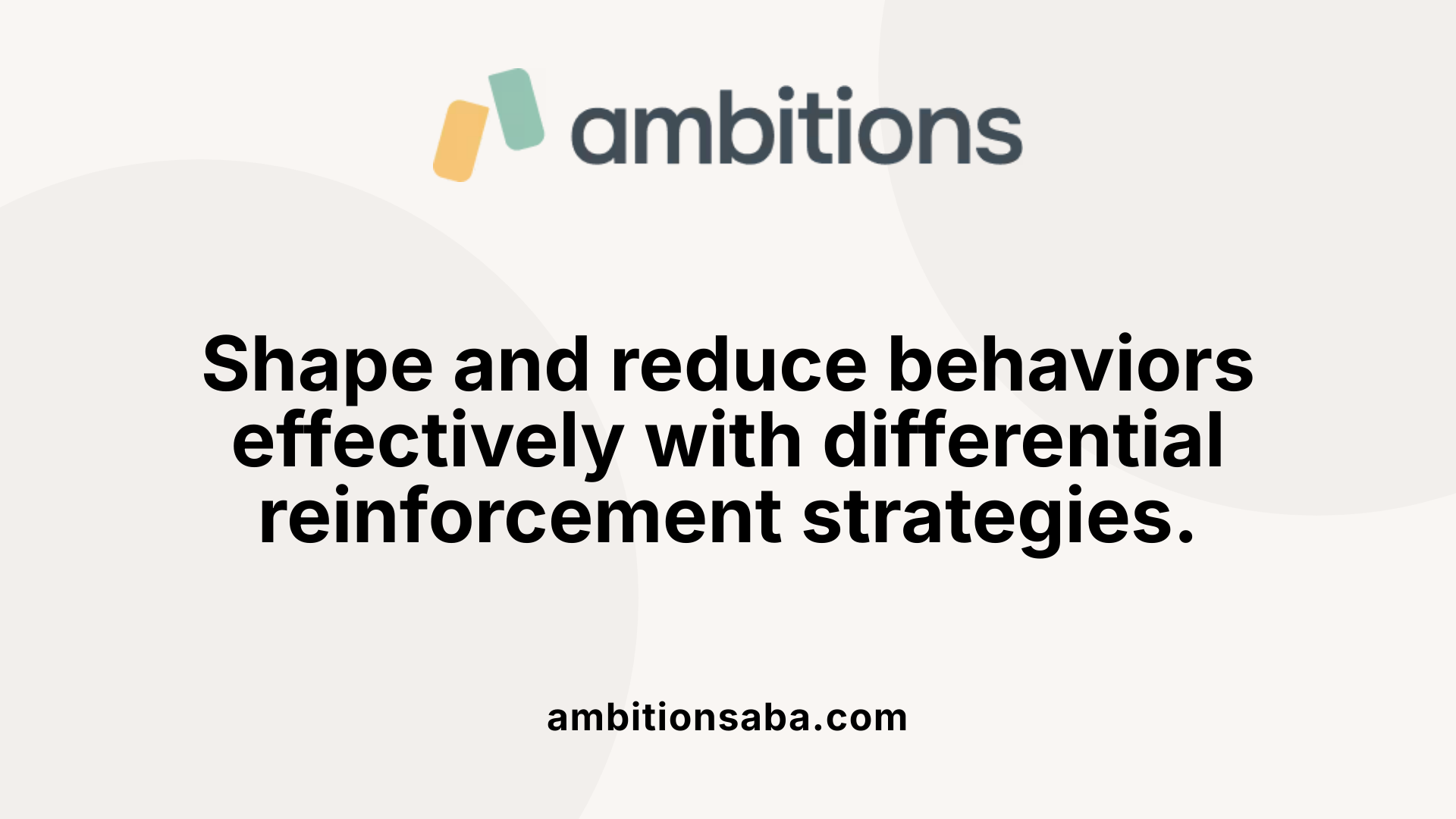Mastering Data-Driven Progress in ABA Therapy
Understanding ABA Therapy and Its Foundations
Applied Behavior Analysis (ABA) therapy is a scientifically grounded method focused on understanding and improving behaviors, particularly in individuals with autism. Rooted in decades of research in behavioral psychology, ABA employs systematic techniques to increase positive behaviors while reducing unwanted ones. Central to this approach is the concept of reinforcement, which serves as a primary tool to shape and encourage lasting behavioral change. This article explores the science of reinforcement within ABA therapy, detailing how it works, its various applications, and the evidence supporting its effectiveness.
What Is Applied Behavior Analysis (ABA) Therapy?

Definition of ABA therapy
Applied Behavior Analysis (ABA) therapy is a science-based approach that studies learning and behavior, primarily developed to support children with autism. It relies on principles of behavioral psychology, especially operant conditioning, to modify behavior by understanding how it is influenced by the environment.
Purpose and goals
The main goal of ABA therapy is to increase useful behaviors while decreasing harmful or unhelpful ones. This includes improvements in language and communication, social skills, attention, memory, academic abilities, and managing problem behaviors. By promoting positive behaviors such as communication and daily living skills, ABA fosters greater independence and quality of life.
How ABA helps individuals with autism
ABA employs strategies like positive reinforcement—rewarding desired behaviors with praise or incentives—to encourage repetition of helpful actions. The therapy uses the ABC model (Antecedent-Behavior-Consequence) to analyze what triggers behaviors and to guide effective interventions. Techniques such as task analysis, prompting, shaping, chaining, and naturalistic teaching facilitate learning and generalization across settings.
Key features of ABA programs
ABA programs are tailored to each individual based on thorough assessments and ongoing data collection. They cover a range of skills from communication and social interaction to motor and academic tasks. Certified professionals like Board Certified Behavior Analysts (BCBAs) design and deliver these programs. Family involvement is encouraged to support skill maintenance. ABA is recognized by authorities such as the US Surgeon General and the American Psychological Association as an evidence-based best practice for autism treatment.
Table: Overview of ABA Therapy Components
| Component | Description | Example |
|---|---|---|
| Behavioral Analysis | Understanding behavior via ABC model | Identifying what triggers and rewards behavior |
| Reinforcement | Strengthening desired behaviors with rewards | Using praise or toys to encourage language use |
| Individualized Programs | Customized goals based on assessment | Skill-building in communication, social skills, or daily living functions |
| Professional Delivery | Therapy by trained and certified clinicians | BCBAs and RBTs providing structured sessions |
| Family Involvement | Active participation of caregivers | Training parents to reinforce skills at home |
| Data-Driven Adjustments | Continuous monitoring and adaptation of plans | Collecting behavior charts and session notes to refine therapy |
The Behavioral Science Behind ABA: Operant Conditioning and the ABC Model

What is Operant Conditioning and How Does it Relate to ABA?
Applied Behavior Analysis (ABA) therapy is firmly rooted in operant conditioning, a concept introduced by behavioral psychologist B.F. Skinner. This principle explains that behavior is shaped and modified through its consequences. Positive reinforcement—where a desirable behavior is followed by a rewarding stimulus—increases the likelihood that the behavior will occur again. Conversely, behaviors that are not reinforced tend to diminish over time. ABA utilizes this scientific approach by applying reinforcements systematically to encourage helpful behaviors, such as improved communication and social interactions.
How Does Behaviorism Serve as the Foundation for ABA?
Behaviorism emphasizes that all behaviors are learned through environmental interactions rather than innate traits. ABA builds upon this foundation by focusing on observable behavior and analyzing how environmental factors influence it. By understanding and controlling these factors, ABA therapy aims to teach new skills and reduce unhelpful behaviors in individuals, particularly children with autism.
What is the ABC Model and How Does it Work in ABA?
The ABC model—standing for Antecedent, Behavior, and Consequence—is central to ABA practice. This model helps therapists dissect behaviors by examining:
- Antecedent: What happens right before the behavior? This could be a specific trigger or environmental event.
- Behavior: The actual observable action or response by the individual.
- Consequence: What follows the behavior, such as rewards or consequences, which help to either encourage or discourage the behavior in the future.
By analyzing these components, therapists can develop targeted interventions that modify behaviors effectively.
What Role Does Functional Behavior Assessment Play?
Functional Behavior Assessment (FBA) is a systematic method used to identify the reasons behind certain behaviors. It involves collecting data through direct observation and analyzing the ABCs to uncover the triggers and reinforcements maintaining the behavior. The insights from an FBA enable creation of individualized ABA programs tailored to a person's unique needs, focusing treatment on the underlying causes rather than just the symptoms.
Together, operant conditioning, behaviorism, the ABC model, and functional assessments form the scientific backbone of ABA, ensuring interventions are data-driven and personalized to improve learning and behavioral outcomes.
Positive Reinforcement: The Heart of ABA Therapy

What Is Positive Reinforcement?
Positive reinforcement is a fundamental concept within Applied Behavior Analysis (ABA) therapy that involves strengthening desired behaviors by immediately following them with rewarding stimuli. This method helps encourage the repetition of helpful behaviors by making them more appealing to the individual receiving therapy.
Types of Reinforcement in ABA
ABA employs various forms of reinforcement to motivate behavioral change. Tangible rewards such as toys or treats are often used, especially with children, to make the experience enjoyable. Praise is another powerful reinforcer, promoting positive social interactions and boosting self-esteem. Over time, therapy also fosters intrinsic motivation, encouraging individuals to engage in behaviors because they find them personally rewarding, not solely for external incentives.
How Reinforcement Strengthens Behavior
When a behavior is followed by a rewarding consequence, the likelihood of that behavior occurring again increases significantly. This principle, rooted in operant conditioning, guides ABA therapists in designing interventions. By providing immediate and meaningful reinforcement right after a desired behavior, therapy ensures that the connection between behavior and reward is clear, enhancing learning effectiveness.
Why Immediacy and Meaningfulness Matter
The timing and relevance of reinforcement are critical. Reinforcement must be given promptly to clearly link it to the behavior, ensuring the individual understands which action is being encouraged. Additionally, the reinforcer must be meaningful to the individual—what motivates one person may not motivate another—so personalized rewards are a crucial component of successful ABA programs.
In summary, positive reinforcement in ABA serves as the driving force that encourages learning and skill development by rewarding desired behaviors in a timely and personally significant manner.
Differential Reinforcement and Other Techniques to Shape Behavior

What is Differential Reinforcement?
Differential reinforcement is a behavior modification strategy used in Applied Behavior Analysis (ABA) that selectively reinforces desired behaviors while withholding reinforcement for undesired or problem behaviors. This approach encourages positive behavior change by rewarding appropriate actions and reducing unwanted ones.
Types of Differential Reinforcement
There are three main types of differential reinforcement, each serving a specific purpose:
- DRA (Differential Reinforcement of Alternative behavior): Reinforces behaviors that serve as appropriate alternatives to the problematic behavior.
- DRI (Differential Reinforcement of Incompatible behavior): Reinforces behaviors that cannot occur simultaneously with the undesired behavior.
- DRO (Differential Reinforcement of Other behavior): Reinforces the absence of the problem behavior for a specified amount of time.
How Differential Reinforcement Works
By providing reinforcement selectively, the technique increases the frequency of positive behaviors and simultaneously reduces the occurrence of harmful or unhelpful behaviors. This creates a learning environment where children with autism are encouraged to develop better communication and social skills, and where challenging behaviors diminish.
Integration with Other ABA Techniques
Differential reinforcement is often combined with other ABA strategies such as positive reinforcement, prompting and fading, shaping, and task analysis. It works within the ABC (Antecedent-Behavior-Consequence) model by modifying antecedents and consequences to encourage desirable outcomes. For example, Discrete Trial Training breaks skills into small tasks reinforced by differential reinforcement, while Natural Environment Teaching uses these principles to promote generalization across settings.
Application in Autism Therapy
In autism therapy, differential reinforcement helps promote appropriate social interaction, communication skills, and compliance with daily routines. For instance, a child may receive praise or a preferred toy when demonstrating an alternative behavior instead of a tantrum (DRA). Reinforcing incompatible behaviors, like using words instead of hitting (DRI), and rewarding periods without problem behaviors (DRO) support long-term progress.
By tailoring these reinforcement strategies to individual needs and combining them with continuous data collection and functional behavior assessments, ABA therapists create effective personalized plans that improve the quality of life for children with autism.
Key ABA Therapy Methods: Discrete Trial Training and Naturalistic Teaching
What is Discrete Trial Training (DTT)?
Discrete Trial Training (DTT) is a structured ABA technique that breaks skills into small, manageable steps. Each trial consists of a clear instruction or cue, the child's response, and an immediate consequence such as reinforcement or correction. This method facilitates rapid skill acquisition by providing clear expectations, consistent prompts, and positive reinforcement like praise or rewards immediately following correct responses.
How Does Natural Environment Teaching (NET) Work?
Natural Environment Teaching (NET) focuses on teaching skills within everyday settings and naturally occurring situations. Rather than isolated drills, NET encourages learning through real-life interactions, making skills more meaningful and easier to generalize. For example, a child might practice communication by requesting toys during playtime at home or social skills during community outings.
How Is Reinforcement Used in These Methods?
Reinforcement is central to both DTT and NET. In DTT, reinforcement is delivered immediately after the desired behavior to strengthen it, often through tangible rewards, praise, or tokens. NET also uses reinforcement but places emphasis on natural rewards intrinsic to the context, such as social attention or access to preferred activities.
How Do These Methods Aid Skill Acquisition and Generalization?
DTT provides structured practice of specific skills, making learning straightforward and measurable. NET complements this by embedding skills within natural contexts, promoting generalization across various settings and people. Together, these methods ensure that children not only learn discrete skills but also apply them functionally in daily life.
Data-Driven Personalization: Assessment, Monitoring, and Adjustments
What Role Do Functional Behavior Assessments (FBAs) Play?
Functional Behavior Assessments (FBAs) are foundational in Applied Behavior Analysis (ABA) therapy. They help identify the triggers, functions, and consequences of behaviors, enabling therapists to develop customized intervention plans. By understanding why a behavior occurs, an FBA guides the creation of strategies that effectively address behavioral challenges while promoting positive alternatives.
What Are the Common Data Collection Methods?
Data collection is a critical component of ABA, ensuring therapy is responsive and effective. Key methods include:
- Direct Observation: Therapists or technicians systematically observe and record behaviors in real-time settings.
- Behavior Charts: Visual tools track frequency, duration, or intensity of behaviors over time.
- Session Notes: Detailed documentation after each session captures qualitative insights and contextual factors.
These tools provide objective information that informs decision-making and tracks progress.
Why Is Ongoing Monitoring and Program Adjustment Important?
ABA therapy is dynamic and relies on continuous assessment to adapt interventions. Ongoing data review allows professionals to determine if current strategies are effective or need refinement. Adjustments based on empirical evidence ensure that goals remain aligned with the individual’s evolving needs, maximizing skill acquisition and behavior improvement.
How Are Reinforcement Strategies Tailored to Individual Learning Profiles?
Since individuals with autism differ in preferences and learning styles, reinforcement in ABA is personalized. Therapists select meaningful and motivating rewards such as praise, toys, or token systems, and gradually shift toward intrinsic motivation. This customization supports sustained engagement and successful generalization of skills across environments.
This data-driven approach — combining thorough assessment, systematic monitoring, and individualized adjustment — forms the backbone of effective ABA therapy.
Ensuring Generalization and Maintenance of Skills
What Does Generalization Mean in ABA Therapy?
Generalization in ABA refers to the ability of individuals to apply learned skills across different settings, situations, and people beyond the initial teaching environment. This is crucial because it ensures that skills are practical and useful in everyday life, not just during therapy sessions.
How Is Skill Transfer Supported?
ABA therapists use several techniques to boost generalization, including:
- Natural Environment Teaching (NET): Practicing skills in real-life settings, like home or school.
- Discrimination Training: Teaching individuals to recognize when and where certain behaviors are appropriate.
- Varying Stimuli and People: Introducing different environments and social partners during training to build flexibility.
Why Is Family Involvement Important?
Families and caregivers play a central role in sustaining skill use. Training caregivers ensures they can:
- Reinforce positive behaviors consistently at home.
- Support practice of new skills daily.
- Recognize situations that might trigger challenging behaviors.
How Are Progress and Maintenance Sustained?
Ongoing reinforcement strategies are essential. Therapists focus on:
- Using meaningful and immediate rewards to encourage continued use of skills.
- Gradually shifting from external rewards to intrinsic motivation.
- Collecting data to monitor progress and adjust plans as needed.
This comprehensive approach maximizes lasting improvements and independence for individuals receiving ABA therapy.
Professional Standards, Ethics, and the Role of Caregivers in Reinforcement
Who Delivers ABA Therapy?
ABA therapy is provided by trained and supervised professionals, including Board-Certified Behavior Analysts (BCBAs) and Registered Behavior Technicians (RBTs). These specialists are rigorously trained to apply principles such as positive reinforcement responsibly and effectively.
What Ethical Guidelines Govern Reinforcement Use?
Ethics play a crucial role in ABA, ensuring that reinforcement methods are applied respectfully and safely. Professionals follow established ethical standards to use positive reinforcement without causing harm, focusing on child-centered approaches that respect the individual's dignity and preferences.
Why Emphasize Positive Social Interaction and Enjoyment?
A core element of effective ABA therapy is fostering positive social interactions and ensuring that learning experiences are enjoyable. This approach helps encourage consistent participation and motivation, making reinforcement more meaningful and impactful.
How Are Families Involved in Reinforcement Practices?
Family involvement is vital to ABA success. Caregivers are educated on reinforcement techniques so they can support skill generalization at home and in daily routines. This partnership increases consistency, helps maintain gains, and promotes long-term behavioral improvements.
ABA’s collaborative model between professionals and families, grounded in ethical practice, enhances the effectiveness of reinforcement strategies and supports meaningful progress in children’s development.
Research Evidence and Future Directions in Reinforcement-Based ABA Therapy

Scientific Validation of ABA and Reinforcement Techniques
Applied Behavior Analysis (ABA) and its reinforcement-based methods have robust backing from decades of research. Recognized as an evidence-based approach by the US Surgeon General and the American Psychological Association, ABA stands on a solid foundation of over 20 scientific studies demonstrating its efficacy. These studies confirm that ABA effectively enhances intellectual functioning, language development, daily living skills, and social abilities in children with autism spectrum disorder. Reinforcement, especially positive reinforcement, is a cornerstone principle in ABA, systematically used to encourage desirable behaviors like communication and social interaction.
Effectiveness in Improving Behavior, Communication, and Independence
The effectiveness of ABA therapy is measured through data-driven assessments and behavior tracking. Through techniques such as Differential Reinforcement and Discrete Trial Training (DTT), ABA facilitates the increase of helpful behaviors and reduction of harmful behaviors. These methods support the development of communication skills, social functioning, and independent daily living activities such as dressing, toileting, and eating. Research confirms that ABA's structured behavior modification strategies contribute significantly to improving learning outcomes and fostering skill generalization across multiple environments.
Emerging Tools Like Telehealth and Data Analytics
Recent advances are enhancing ABA's accessibility and precision. The integration of telehealth enables therapy delivery beyond traditional settings, making services more widely available and adaptable to individual needs. Additionally, data analytics tools allow practitioners to collect, analyze, and interpret behavioral data efficiently, optimizing treatment adjustments and efficacy. These technological innovations support more personalized and flexible interventions, improving the quality and reach of reinforcement strategies used in ABA therapy.
Continuing Developments and Refinements in Reinforcement Practices
The field of ABA continuously evolves with ongoing professional development and research. New applications and refinements in reinforcement methods, such as tailoring reinforcement to increasingly focus on intrinsic motivation, help sustain long-term behavior change. Ethical standards ensure that child-centered, respectful approaches remain central. Future directions also include expanding ABA's scope beyond autism treatment into education, workplace training, and broader behavioral health, adapting reinforcement strategies accordingly to diverse populations and settings.
The Transformative Power of Reinforcement in ABA Therapy
Reinforcement lies at the core of Applied Behavior Analysis, providing a powerful and scientifically validated method to promote meaningful behavioral change in individuals with autism. Through harnessing principles rooted in operant conditioning, ABA therapy strategically uses reinforcement—especially positive reinforcement—to encourage communication, social skills, daily living abilities, and the reduction of challenging behaviors. Tailored interventions, continuous data-driven adjustments, and collaboration with families ensure that reinforcement techniques are personalized and effective across diverse settings. Supported by extensive research and evolving with advancements in technology and clinical practice, the science behind reinforcement in ABA therapy continues to enhance outcomes and improve quality of life for countless individuals and their families.
References
- Applied Behavior Analysis (ABA)
- ABA Therapy: Backed by Data, Built on Behavioral Science
- Understanding the Science Behind ABA Therapy for Autism
- What is Differential Reinforcement? Exploring its Applications
- The Science Behind ABA Therapy: How It Works
- Applied Behavior Analysis (ABA)
- The Controversy Around ABA

